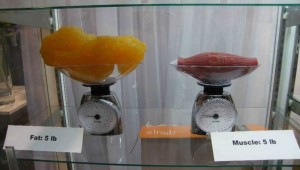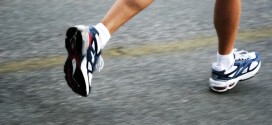 In the old Westerns it was always easy to identify the bad guys because they always wore black. But, in the ensuring decades it has not been as easy to delineate the good from the bad. Bad guys don’t always wear black, and every once in a while one of them actually turns out to be a hero.
In the old Westerns it was always easy to identify the bad guys because they always wore black. But, in the ensuring decades it has not been as easy to delineate the good from the bad. Bad guys don’t always wear black, and every once in a while one of them actually turns out to be a hero.
Recent research sponsored by the American Diabetes Association and the National Institutes of Health is actually proving incredible insight into a notorious “bad guy,” and forcing researchers to rethink how we view good and bad fat.
Body fat—the good and the bad
Did you know that your body has two kinds of fats? No, seriously. Just like the fat that you can consume in foods, your body is naturally comprised of both good and bad fats. The question that researchers have been asking for years, is how we can increase the amount of “good fat” while reducing the bad?
Body fat or adipose tissue, as it’s known in biology, actually plays several vital roles within the body. In addition to insulating the body and cushioning internal organs, body fat serves as an energy store and secretes hormones such as leptin and estrogen. Brown fat or brown adipose tissue is considered to be “good fat” and is common to humans, rodents and small mammals. It was once believed that brown fat only existed in infants but was recently discovered in adults.
Researchers believe that brown fat may hold weight loss secrets that would benefit overweight and obese individuals. In infants and adults, brown fat actually generates heat to warm the body when it is exposed to cold temperatures. To generate heat, the brown fat, mainly located in the neck and upper chest, burns calories through a unique thermogenic processes that raises the basal metabolic rate (BMR).
Brown fat is very different from white adipose tissue or white fat that develops from a sedentary lifestyle combined with poor diet. A certain amount of white fat is beneficial and necessary for bodily functions, but problems arise when too much accumulates within the body. Elevated levels of white fat especially abdominal fat are related to several disease including cardiovascular disease, diabetes, and metabolic syndrome. Excess white fat is also seen in obese and overweight individuals. More than one-third of American adults and almost 17% of youth are obese. Globally, approximately 400 million adults are obese and an additional 1.6 billion people are considered overweight. A person is considered obese if his or her body mass index (BMI) is equal to or greater than 30, whereas an overweight person has a BMI between 25.0 and 29.9. In addition to being associated with serious diseases, white fat also does not burn calories like thermogenically active brown fat.

New research offers hope
Two studies of mice and humans conducted by the Joslin Diabetes Center in Boston, suggest that exercise can actually led to a browning of white fat.
The studies found that mice that ran on an exercise wheel for 11 days and men who undertook 12 weeks of training on an exercise bicycle underwent a browning of their subcutaneous white adipose tissue that appears to have led to profound changes in the way that fat behaved in the body. The “browned” white fat behaved more like brown adipose tissue in that it was more metabolically and thermogenically active than white adipose tissue. Researchers were able to discover that this “new” fat affected other bodily tissues by transplanting the exercise-training fat from lean mice into obese mice.
The murine study suggests that the browned fat was associated with increased glucose uptake, improved body composition, decreased fat mass and increased insulin sensitivity. In short, the transplanted browned fat had a positive impact on the overall health of the obese mice.
“Our results showed that exercise doesn’t just have beneficial effects on muscles, it also affects fat, said Kristin Stanford, PhD, a postdoctoral fellow at Joslin Diabetes Center. “It’s clear that when fat gets trained, it becomes browner and more metabolically active. We think there are factors being released into the bloodstream from the healthier fat that are working on other tissues.”
While researchers were unable to perform a similar transplant in humans, they believe that exercise plays an important role in improving the health of obese and overweight individuals.
“We know that exercise is good for us,” says Laurie Goodyear, PhD, senior researcher on the study and associate professor at Harvard Medical School. “But what we’re showing here is that fat changes dramatically in response to exercise training. This is not the fat that’s around your middle, which is bad fat and can lead to diabetes and other insulin resistance conditions. It’s the fat that’s under the skin, the subcutaneous fat that adapts in a way that appears to be having important metabolic effects.”
Exercise is the Answer
Researchers have determined that at least 12 weeks of exercise is necessary for white fat to become browned, but questions remains as to how much exercise needs to be performed. Several studies have been conducted which conclude that 150 minutes (2 hours and 30 minutes) of moderate-to-vigorous physical activity (MVPA) per week, may be enough to improve an adults overall health.
A recent study released by Canadian researchers has determined that low-volume, high-intensity interval training (L.H.I.T.) performed over a two-week period produces physiological results that are similar to two weeks’ worth of high volume endurance training (i.e., distance running).
As part of the study, the researchers utilized L.H.I.T. versus the traditional “all out” H.I.T. because they believed that the traditional H.I.T. approach was too demanding and less than practical for obese individuals and older adults—two groups which could benefit from interval training.
With L.H.I.T. the volume of exercise was ~90% less than endurance training. Second, the time spent training was also ~75% lower. These two facts alone are reasons to jump for joy if you are hard-pressed to find enough hours in the day to manage work, family and exercise. In short, L.H.I.T. provides significant physiological changes in less time and effort.
L.H.I.T. versus H.I.T.
The differences between L.H.I.T. and H.I.T. are slight. With L.H.I.T. you reduce the intensity of the exercise and the rest periods between the intervals while increasing the working interval duration. For example, you jog at 70% effort for 60 seconds then walk for 75 seconds and repeat. With H.I.T. you’d be required to run “all out” at 100% effort for 60 seconds then jog for 120 seconds and repeat.
In the study, participants engaged in a total of 6 cardio sessions over a two-week period—Monday, Wednesday and Friday—with each session lasting approximately 20 to 29 minutes. While the timing of the sessions was essentially the same, the study participants increased the number of intervals they performed every two sessions. During the first two training sessions they completed 8 intervals, 10 intervals were completed during the third and fourth sessions, and 12 intervals during the last two sessions.
“Given that lack of time is the number one perceived barrier to performing regular exercise, a low-volume HIT program similar to the one employed in this study may be a potent, practical, and time-efficient exercise strategy,” writes the study’s authors.
Takeaway
Based upon the studies conducted by the Joslin Diabetes Center, it’s probably a safe bet that other researchers will be conducting trials of their own to investigate the correlation between exercise and the browning of white fat. In the meanwhile there are some valuable takeaways from the data that has been published. First, if you aren’t exercising then you need to start. Second, if you regularly engage in physical activity then you are definitely headed in the right direction, so keep it up..
 Supplement Judge Unbiased Supplement Reviews – Do they really work??
Supplement Judge Unbiased Supplement Reviews – Do they really work??




